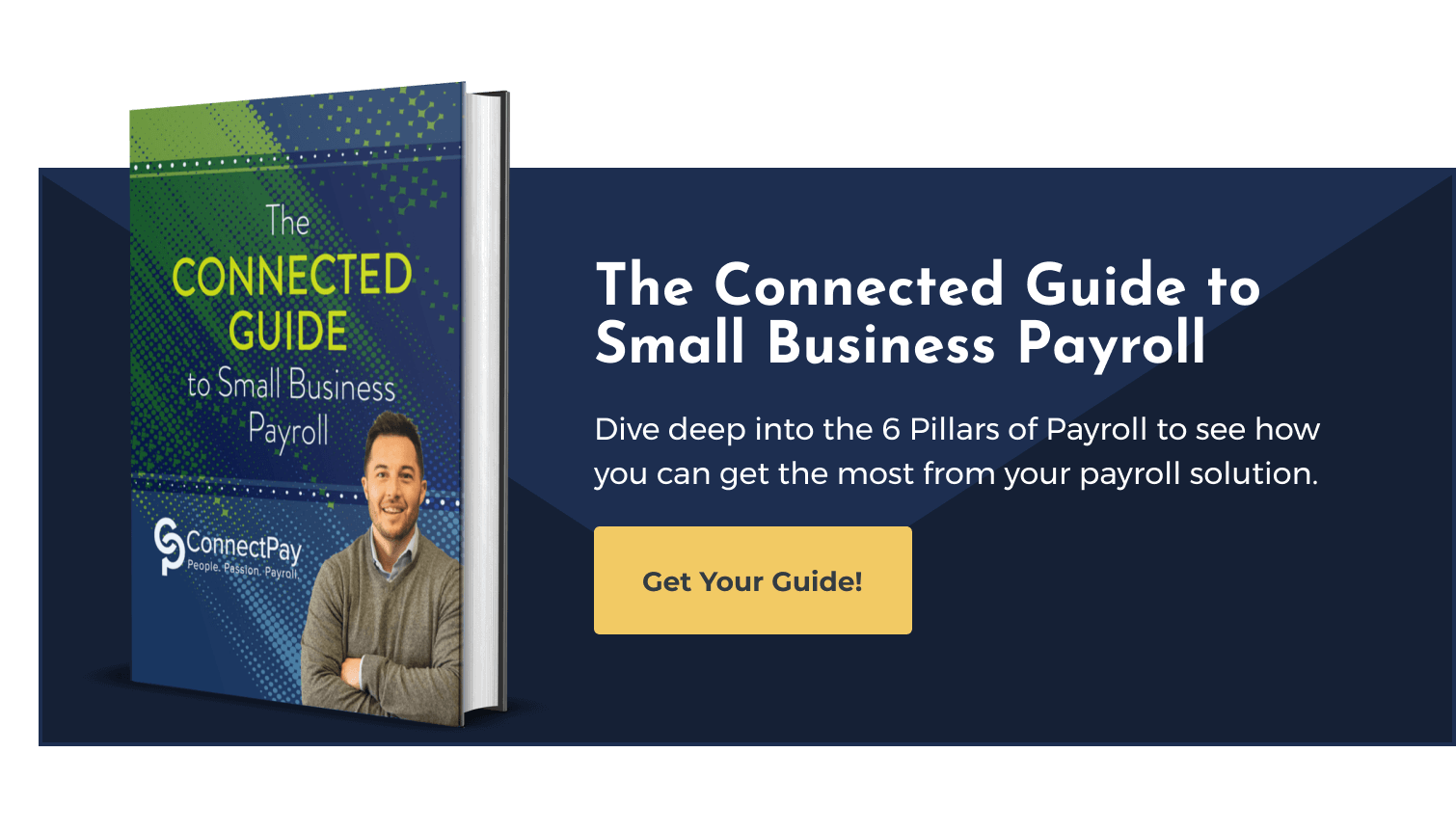5 Payroll Security Best Practices Every Small Business Should Know

Are you taking payroll security seriously for your small business? If not, it’s the business equivalent of leaving your house unlocked when you leave for vacation: you might as well invite the robbers right in.
Picture this: You've poured your heart and soul into building your small business from the ground up. Your team is like a family, and you cherish the trust they've placed in you. But what if a payroll data breach shattered that trust?
The consequences could be devastating - damaged reputations, legal repercussions, and financial losses that might be impossible to recover from. That's where payroll security best practices come into play.
This post provides you with 5 best practices you can use to shore up your payroll security processes and keep your data — and your profits — safe.
What is Payroll Security?
Before we cover our best practices for payroll security, let’s first answer a foundational question: what is payroll security? Payroll security is the measures and protocols your organization puts into place to protect the confidentiality and integrity of your payroll data and systems.
One of the primary reasons businesses need payroll security is to protect employee confidentiality. Payroll data often contains personal and sensitive information, such as Social Security numbers, addresses, and bank account details. Ensuring the security of this information is crucial to prevent identity theft, fraud, and other malicious activities that could harm employees.
Related: Payroll Diversion Fraud: 3 Best Practices to Avoid Scams
Another reason to implement robust payroll security measures is to safeguard business finances. Payroll represents a significant financial aspect of any organization, and it is essential to protect the funds allocated to employee compensation. Unauthorized access or tampering with payroll systems could result in financial loss, unauthorized payments, or fraudulent activities.
Compliance with data protection regulations is another key reason businesses prioritize payroll security. For example, the General Data Protection Regulation (GDPR) in the European Union and the California Consumer Privacy Act (CCPA) in the United States impose strict requirements for handling and safeguarding personal data.
Lastly, you’ll want to keep payroll systems and processes secure so you can ensure payroll continuity! Payroll disruptions due to system failures, cyberattacks, or data breaches can lead to delayed or inaccurate payments. As a result, you’ll battle employee dissatisfaction, strained relationships with vendors and suppliers, and even legal repercussions.
By implementing robust security measures, including data backups, redundancy plans, and disaster recovery protocols, businesses can minimize the risk of payroll disruptions and security challenges, ensuring the smooth and timely processing of employee payments without opening them or your business up to cyberattackers.
1. Understand Common Types of Payroll Fraud
The first thing you need to know about payroll security is the different types of payroll fraud. Though hacking and data breaches pose significant threats, they are not the only types of payroll fraud to look out for.
Let’s examine some common types of fraud to consider:
- Advance Retention: An employee receives an advance on their salary, but fails to repay that advance and continues collecting future payments unimpeded.
- Buddy Punching: One employee clocks in for another employee who is not actually present.
- Expense Reimbursement Fraud: An employee claims reimbursement for expenses that are not work-related or for fees they have not actually incurred.
With this in mind, we must understand that cyber threats are one of the largest considerations when it comes to payroll security. Hacking and unauthorized access to payroll data are serious risks as well, as they can lead to data breaches and ransomware attacks. These threats can be external or can come from bad actors within your organization.
2. Educate Your Employees
The first step you can take to prevent payroll fraud and increase payroll security is educating your employees. Provide training for your staff on password management, emphasizing the importance of strong, unique passwords for all their logins.
You should also take steps to make staff aware of phishing scams, covering the proper processes for suspicious emails or links. One of the most common challenges is phishing scams where a hacker pretends to be a manager, the CEO, or a COO via email. They will send a message encouraging low-level employees to wire transactions. Educating staff about the possibility of these scams and the tell-tale signs to look for (such as the email return address, language usage, and more) can help you avoid these challenges.
Additionally, to guard against internal threats, ensure you establish a policy regarding screen locking. Requiring employees to lock their computer screens when they step away from their desks helps prevent unauthorized access and limits the risk of internal data breaches.
Lastly, don’t just “set it and forget it!” Conduct regular refresher training sessions to keep employees informed about the latest security challenges and to ensure that they remain cautious and proactive.
A product like the ConnectPay HR Resource Center can help train employees in cybersecurity and beyond using the Learning Management System! Once you partner with ConnectPay, you can contact a payroll specialist to add the subscription to your accounts.
3. Never Use Unsecured Wi-Fi
Our third payroll security best practice is to never use unsecured Wi-Fi networks when accessing sensitive payroll data. Public Wi-Fi networks, like those available at coffee shops, are easily accessible to accomplished hackers.
If you have remote workers or in the event that employees must work off-site or while traveling, set up a virtual private network (VPN) to create a secure connection between their devices and your network.
A VPN encrypts data transmissions and helps protect against eavesdropping and unauthorized access. Take particular care with regard to your remote workers, as they may frequently rely on a variety of Wi-Fi networks to access company systems.
4. Conduct Regular Security Audits
Regular security audits are vital to assess and strengthen your payroll security measures. Let’s walk you through a simple, seven-step process you can use to conduct security audits in your organization.
- Start by creating an audit plan that outlines the procedures, timelines, and responsibilities involved.
- Next, review existing payroll security policies and procedures, including documents like security policies, data protection policies, user access controls, password management policies, and incident response plans.
- Third, you’ll want to assess the effectiveness of access controls for payroll systems and data, evaluating user access rights, permissions, and roles.
- Next, verify your data protection measures align with relevant data protection regulations and standards set forth by other players in your industry.
- You will then want to test your system’s vulnerabilities. Conduct vulnerability assessments and penetration testing to identify potential security weaknesses in payroll systems and networks.
- Evaluate the organization's compliance with data protection regulations, such as the General Data Protection Regulation (GDPR) or the California Consumer Privacy Act (CCPA), as well as any industry-specific regulations.
- Finally, develop a corrective action plan to address any deficiencies and vulnerabilities uncovered during the audit.
Conduct these types of audits regularly to ensure your processes are sharp, working properly, and up to current standards.
5. Utilize Secure Payroll Software
Our final best practice for payroll security is to utilize secure payroll software to house your data and manage your payroll processes.
Look for software solutions that offer role-based access, allowing you to control user permissions and limit access to sensitive data. Multi-factor authentication adds an extra layer of security by requiring users to verify their identities through multiple methods.
Ensure that the software includes secure data storage, with encryption and strong backup protocols in place. If integrating with other systems, such as time-tracking or HR software, choose software with secure API integrations.
Additionally, verify that the payroll software complies with relevant data protection regulations to ensure that your data is handled with the appropriate level of security and privacy.
ConnectPay offers security solutions including:
- Role-based access
- Multi-factor authentication
- Secure data storage and information backup
- Secure API integrations
- Compliance with data protection regulations
- Cyber insurance
- WISP and Data breach response plans
- Regular penetration tests and other security tests
- Third-party software for monitoring programs
- Security training resources for staff
Manage Payroll Security the Easy Way
Following the best practices listed in this post can set you on the right path when it comes to payroll security. But trying to manage everything manually can be enough to make you want to tear your hair out.
If you want to manage security the easy way, you’ll need to schedule with a supportive, secure payroll provider like ConnectPay. We offer you the software, support, and connections you need to run payroll like a well-oiled — and secure — machine.
For more information about payroll best practices, check out our free resource, the Connected Guide to Small Business Payroll. This guide can offer you insights, tips, and tricks on everything from workers’ comp to payroll taxes and more!







